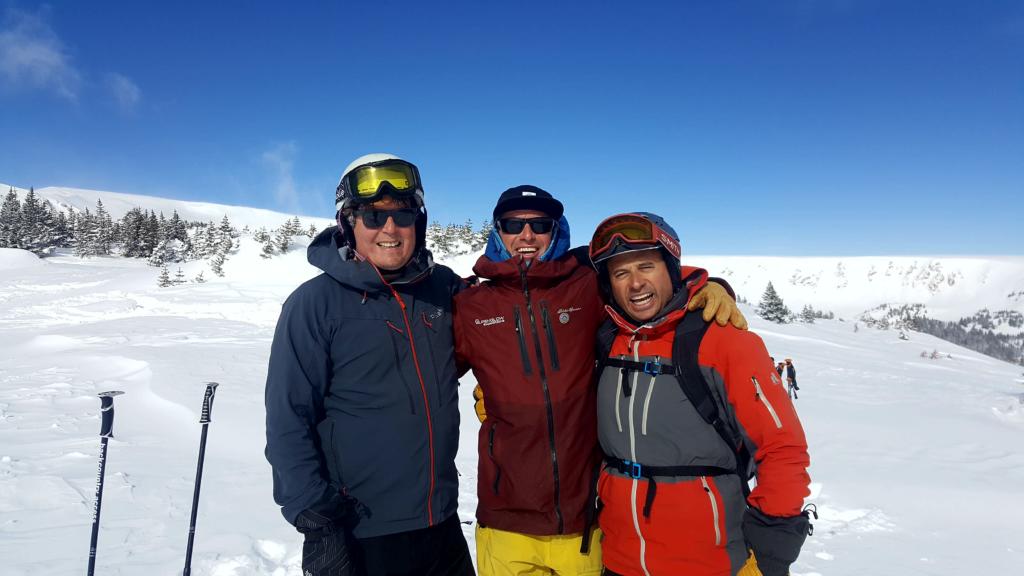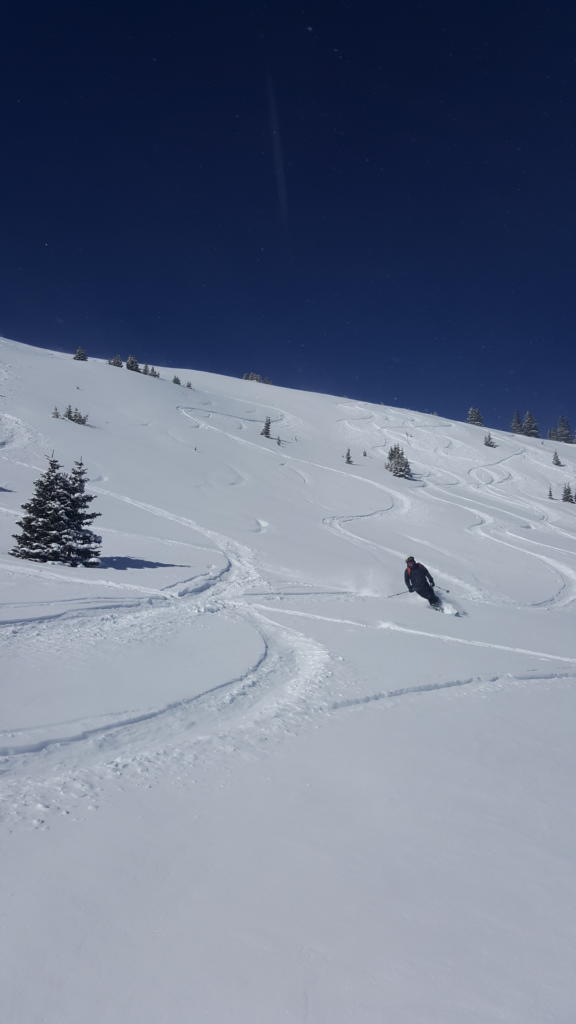Interview Series with Unique Customer Service Experts
Part I: Q&A with Mountain Guide Ray Hughes
The first thing you become aware of on a Ray Hughes-guided back country ski trip is that the three most important things to remember are Safety, Safety, and Safety. On February 21, 2019, I went out on a back country ski expedition with Ray Hughes with the goal of skiing virgin powder atop Berthoud Pass, Colorado. There is a lot that goes into the customer experience before you carve the first turn.
First, there is the equipment: specialty boots, bindings, ski skins (which allow you to walk uphill in skis), avalanche shovels and beacons, and Ray checks to make sure you have the right clothing for a climb and then a descent at 1° F at 11,000 feet. None of this stuff is available at Dick’s Sporting Goods or your typical ski shop.

Before you take a single step, Ray checks that the avalanche beacons (yikes, I really need that?!) are synced up, and then you have to repeat out-loud what to do in case someone in the party gets caught in one. (Dial 911, declare where you saw the person last, switch your beacon from send/find, get out your shovel).
Once at the summit, there are very specific ways the skiers attack what looks like limitless powder, always being mindful that the sport is inherently dangerous.
The skiing was indeed awesome, and I came away from the trip understanding that Ray has some very interesting challenges when it comes to Customer Service.
Jim: It’s pretty clear to me, Ray, that in your business the customer isn’t always right. How do you handle a customer that insists they know what they are doing but may be endangering themselves and others?
Ray: Most often, educating clients about the potential hazards in the backcountry creates enough awareness that they follow direction and respect safety. To evaluate ability, I watch their attention to detail. Do they remember to put their boots in ski mode or remember to close all the zippers? When we transition, does everything come out of the backpack transitioning from skinning to skiing? If anything is amiss, I immediately recalculate how and what I need to communicate.
Body language and behavior is also a huge tell. If I’m guiding someone who only sees the line they want to ski but are unaware of the hazards, like changes in terrain, other parties, or even their own ability, it’s imperative that I firmly, but gently remind them. Even the most aggressive clients are very receptive of feedback when provided as learning versus correcting them.
Jim: What are your customers’ emotional needs when they go out on trips; what is it they are hoping to get?
Ray: In my experience, what inspires people to ski in the backcountry is a combination of desires. Many folks want to get away from the crowds, or ski powder days after the latest storm. Or they don’t want to worry about the logistics of planning a ski vacation and want a guide to do the work. Of course, some just want to be able to post on Instagram that they skied Gnar Gnar Couloir this weekend.
I always make sure to talk about where clients have skied, experiences that they liked or didn’t like. If it is a client’s first trip with me, the most fruitful time to ask what they are thinking is right after the first run. I am fortunate in my business that I have a lot of time with the client gearing up, prepping and hiking.
That said, gauging clients is mostly art-form. I’ve had days where my own expectations of the trip weren’t met only to hear clients say it was the best day skiing ever.

Jim: New customers come to you mostly via word-of-mouth. Tell us a little about how you find out about the new customer’s capabilities and ability to meet the challenges of back-country skiing?
Ray: Nearly all my clients are referrals from either mutual friends or other mountain guides. Most guides I know will make a note about their client’s ski ability, interests, etc., which can make vetting fairly easy. I ask questions about where they’ve skied, the experiences they’ve had, and their expectations. The absolute most important attribute to any reputable guide is delivering on expectations in the safest manner possible.
Folks new to backcountry skiing are looking for a mix of coaching, demonstration, and feeling comfortable in variable terrain. It’s common for skiers to feel intimidated in the backcountry because there are no signs, ropes, no grooming. Easing into terrain with clients is important because it sends the message, “your safety is paramount.”
Jim: It’s hard to miss how much you observe and research the snow. Tell me a bit about your avalanche training and what you look for when you approach something you want to ski? What are red flags that might not seem obvious to regular skiers?
Ray: As mountain guides, we are required to have extensive avalanche training combined with years of experience. I started the same way as everyone else, Avalanche Level 1. It’s a three-day course on how to move through terrain safely, how to rescue a partner (called companion rescue), how to use an avalanche beacon, probe, and shoveling techniques if someone becomes buried. After a few years gaining experience, I took Avalanche Level 2, which focuses on snow science for four days, like layer and snow crystal identification, standardized snowpack evaluation along with more companion rescue practice. After that, avalanche Level 3 is a weeklong course focused on avalanche forecasting, travel technique, and testing on companion rescue technique. Three avalanche beacons are buried in a 90m x 90m area, and we must demonstrate locating, probing and unburying two beacons in seven minutes. This portion is pass/fail along with a written exam.
Three red flags usually overlooked by inbounds skiers are rapid new snow accumulation, high winds, and a rapid rise in temperature. There are others but these are the first ones I look for in the avalanche report every morning. Careful evaluation needs to take place before I consider any travel in the backcountry, uphill or downhill.
Jim: In regards to question #1, tell me about a time that a customer was pushing the limits too hard and how you handled it?
Ray: Recently I had a client who wanted to make big GS turns down a heavily crevassed glacier. Heavy snow had covered up many of the crevasses making it nearly impossible to see the holes. After nearly careening into one, we regrouped and I pointed out the subtle sag of the snow bridges across the crevasses to really make a point that he was endangering himself. I made a point to put urgency and awareness in the forefront, and complimented him specifically when he modified his turns and could spot some of the sags on his own. It was clear he wanted to master the terrain, and with some firm guidance, he came away feeling like he did.
About Ray Hughes:
Ray Hughes is an Internationally Licensed Mountain Guide, IFMGA. He guides Rock, Alpine and Ski Mountaineering as well as Rapid Ascent High Altitude expeditions. His favorite places to guide are the European Alps and the South American Andes. And when he’s not guiding, you’ll find him standing in the water waving a stick at fish or trail jogging. For inquiries: raylhughes@gmail.com













